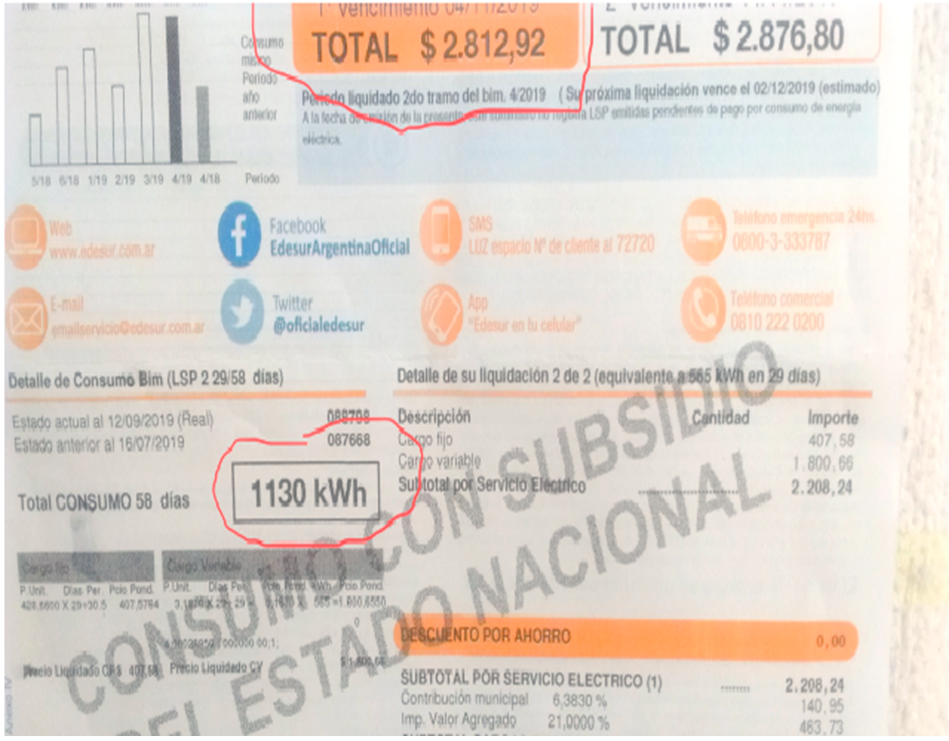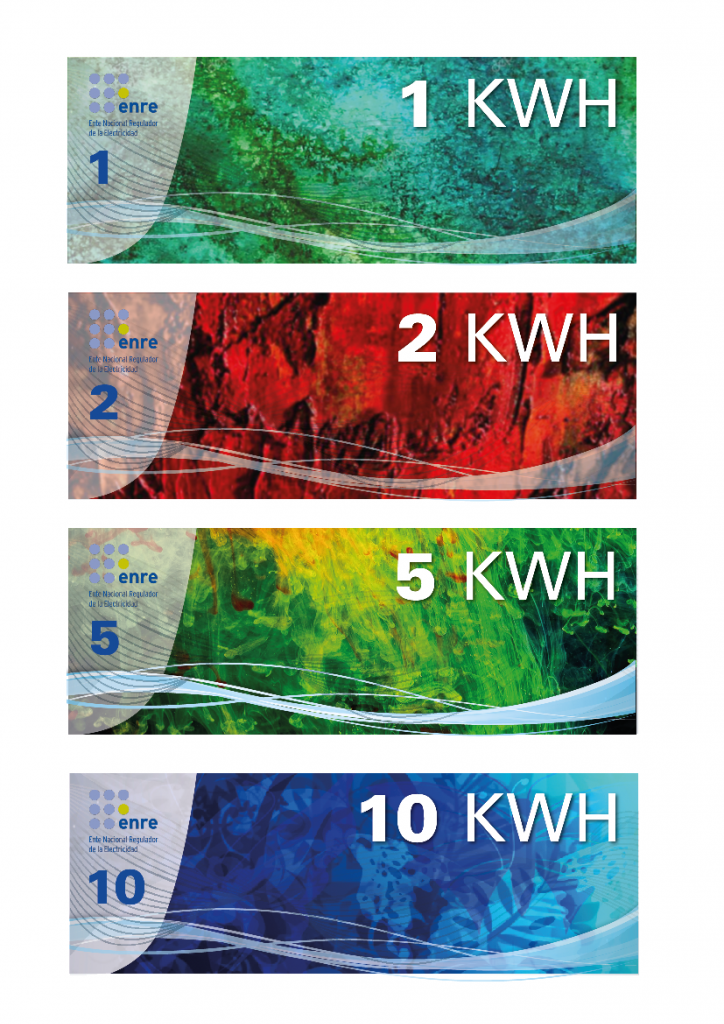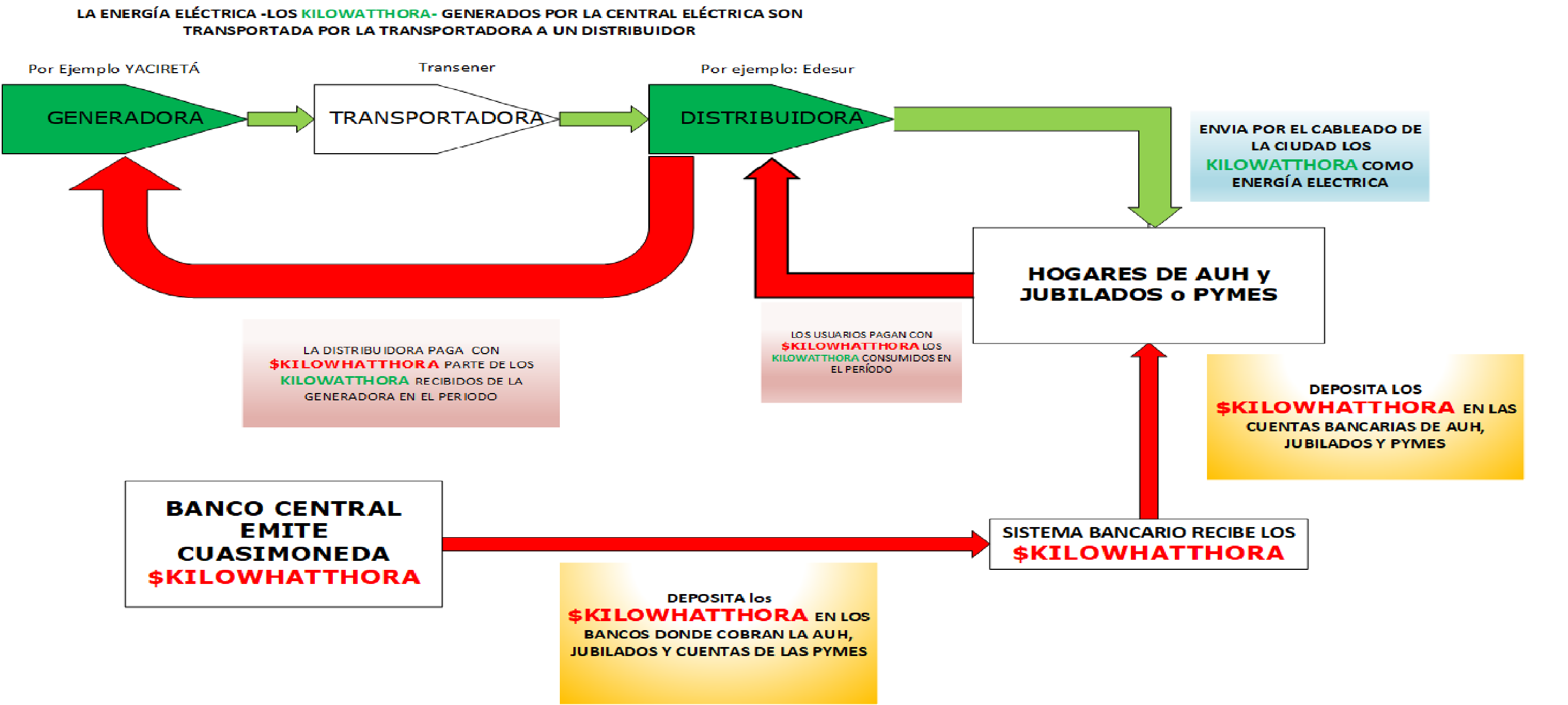Héctor H. Thompson email: hthompson@perio.unlp.edu.ar
Monetary technology, which was created to make trade easier, was detrimental to the current money that transfers wealth from production to areas of capital accumulation. To limit the never-ending subtraction of wealth by the financial world, it is necessary to gradually incorporate money whose technology is science-based, that is backed by energy, that has no interests, and which is exclusively used in productive activities. A fixed energy measure (kWh) is hereby suggested as the world’s most used measure: Price.
Imagine the existence of paper money of different denominations that represents KWH currency.
This money could be used to make payments or to be saved. If it is used to pay an electricity bill, the consumer should pay with paper money the value that equals the kWh he or she has consumed, as shown in the electricity bill. (In order to pay for other goods or services, it would have to be converted into regular money.)
The advantage of saving in KWH would be that it never changes in value (in no way is it subject to inflation or devaluation). Let’s see why:
Value and price
The “Subtepass” card, which was used in Buenos Aires to pay for subway rides until May 2016, cost 1.00 Argentine peso in early 2012. Its price gradually rose, but its value for the passengers remained the same: 1 ride (this use value would only disappear once the ride was taken).
Until the past century, reference currencies were backed by gold (coins or paper money could be exchanged by gold). Gold has the disadvantage of existing in a limited amount, which limits the amount of money that can be issued with such a backing, which is a setback for growing economies, which require plenty of money for their increasing production and consumption. As from 1971, Nixon eliminated gold as the backing of the world’s reference currency (US dollar). In spite of this, it is a common misconception that all imperial currencies (US dollar, euro, yuan, etc.) have an inherent value that is higher than that of the currencies of dependent countries (that assessment only exists in people’s minds and, if necessary, it is reinforced by the military). No fiduciary currency has inherent value.
Just like any other measure of general use, the Price “measure” -without a doubt, the world’s most used measure- needs to reference an invariable unit of measure
The kilowatt-hour (kWh), an internationally accepted physical unit, is hereby suggested as a price unit. Currently, the Price “measure” lacks a science-based unit of measure. What we use are currencies whose value changes depending on the time and place, like the Argentine peso, the US dollar or the euro. (This is as illogical as the meter changing its length depending on the time and place from where the length is measured.)
Scientifically speaking, there has been a laborious global agreement that all measures are taken with invariable units (for example, “longitude” is measured in “standard meters”). An invariable unit could be assigned to money, thus making its value equal to that of energy. To avoid creating and establishing a new unit, we could use the energy units already in use, such as the one that measures the electricity consumption of homes.
Proposed unit of measure for Price: kilowatt-hour
In any electricity bill, the electric energy consumed is valued in kilowatt-hours (kWh) and in Argentine pesos ($).
The kWh is a fixed unit throughout the globe, as opposed to the $ unit, which changes its value depending on the time and place. Along that line of thought, the energy needed to produce a good or render a service could be used to estimate the Price of that good or service -expressed in $kWh; then the regular items that constitute the cost would be added, and finally the compensation of the production agents would be added as well. All of this would be expressed in kWh. Other energy sources such as oil, gas and coal are measured in BTU and can be converted into kWh.
The length of one meter is one meter. Likewise, if the kWh was used as a Price unit, the price of one kWh would be one kWh. If the kWh was globally accepted as a Price unit, all other price units, such as the US dollar, the euro or the Argentine peso would have to refer to the kWh: the standard Price unit.
In conclusion, it is possible to gradually incorporate science-based money with a measure standard that does not alter its value.
The Earth’s new wealth is the solar energy over its surface. Countries are potentially as wealthy -in terms of energy- as their expanse of land allows them to be. Argentina is a clear example of how some have appropriated its agricultural resources using domination policies and taking advantage of the imperfect technology of fiduciary currency to transfer that wealth abroad. Apart from what the empires in power have taken, 400,000,000,000 US dollars from Argentinians are estimated to be deposited in foreign banks and in tax havens. We should also take into account the debt interests, the debts generated with no production and the profits of foreign companies.
In the future, we will all be able to turn solar energy into the source of the resources necessary to live
Only when all surfaces turn solar energy into kWh, to be incorporated into the public network, and those kWh are represented as energy currency, will we achieve energy and financial democracy, and from that stage, a world supported by the Sun. If we do things right at a global level, the labor-related use of time as a source of economic resources for citizens will simultaneously disappear, [before it all] becomes a global disaster. In the past, paper money like the one in use would have been issued. However, when this is implemented, Blockchain technology will be used, and it will be supported by digital wallets in cell phones.


